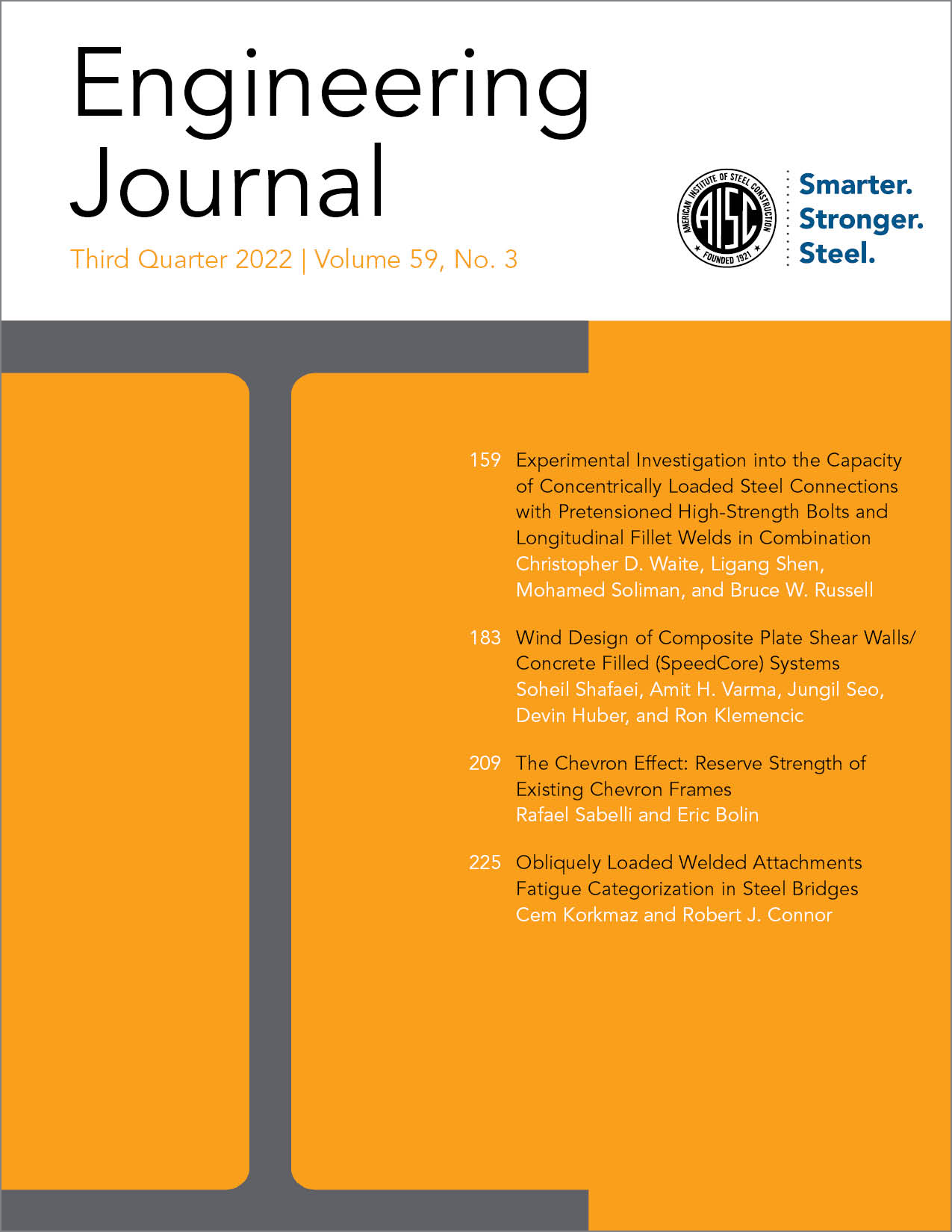The Chevron Effect: Reserve Strength of Existing Chevron Frames
DOI:
https://doi.org/10.62913/engj.v59i3.1191Keywords:
gusset plates, braced frames, truss connections, chevron braces, analysisAbstract
Recently an analysis model has been developed to address the large shear forces (the so-called “chevron effect”) that can develop in the connection regions of chevron-braced frames. These shear forces (and the corresponding moments) are the result of the application of the brace forces at the beam flange, eccentric to the beam centerline. Prior to the presentation of these methods, such forces were not generally considered in design, without apparent incident. Sabelli and Saxey presented an alternative model that determines substantially higher resistance in these connections. Both models resolve the shear and moment within the connection region such that forces outside that region are consistent with those determined using a centerline model. Greater resistance can be determined if the flexural strength of braces and the beam outside the connection region are used to resist a portion of the chevron moment. This paper presents a complete plastic-mechanism strength of the chevron frame with yielding of the beam web due to the local shear forces. This complete plastic mechanism strength can confirm the adequacy of existing designs that did not consider the chevron effect.

